Key points
Award nominations are due the first weekday of March. The Award is presented in partnership with the American Industrial Hygiene Association, the American Society of Safety Professionals, and the National Safety Council. Examples of PtD practices are summarized in the Previous Award Winners at the end of this page.
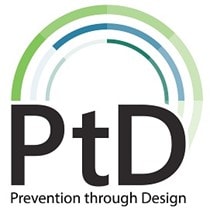
Highlights
Congratulations to Bruce Main, PE, CSP, and to Jacobs Solutions, Inc., for winning the 2024 PtD awards! See Previous Award Winners below for summaries of the 2024 winners and nominees.
About the Award
The NIOSH PtD annual award recognizes individuals, teams, businesses, and other organizations that have eliminated or reduced hazards through design or re-design efforts or have contributed to the body of knowledge that enables PtD solutions.
NIOSH presents the award in partnership with the American Industrial Hygiene Association (AIHA), the American Society of Safety Professionals (ASSP) and the National Safety Council (NSC).
More than one award may be given each year, depending on the type of nominations received (individual vs. organizational, research vs. practice, etc.). Nominations must benefit workers in the United States, especially nominations showing examples of PtD being used in a workplace. Nominations from previous years are allowed to be updated and resubmitted.
PtD Involves both a Priority and a Process.
- All nominations will be considered from, or for, individuals, teams, businesses, or other organizations who have developed workplace interventions or research in harmony with the priority or the process of PtD.
- Nominations should relate to work with recent or continuing impact. Smart and innovative physical designs are very important, but so is an effective design safety review process that finds solutions using the combined experience and expertise of all involved disciplines.
PtD Priorities
Ideally, PtD efforts would avoid or eliminate hazards completely – with priority given to the top of the Hierarchy of Controls. Such solutions avoid the "must trust" factor that depends on the actions of workers, operators, and maintainers to ensure protection. Complete hazard elimination, however, is not always possible. For example, if an earnest team's review of a process or design does not completely eliminate hazards, but the review results in protecting workers through a careful combination of controls at different levels of the hierarchy, this too could be considered PtD.
PtD Process
PtD doesn't need to depend on one person but can be a process followed by a multidisciplinary team that meets to conduct design safety reviews. For example, better solutions often result when management and designers learn and gain expertise from experienced operators and maintainers, and safety and health professionals. Such a team meets to identify hazards, assess risks, develop alternatives, and recommend better solutions. The ASSP/ANSI (American National Standards Institute) Z590.3 PtD standard provides helpful tools for this process.
Nomination Due Date
Nominations are due the first weekday in March. The NIOSH PtD program office will send a confirmation email when we receive a nomination.
Submitting a Nomination
Submit nominations by email to ptd@cdc.gov with "PtD Award Nomination" in the subject line.
When preparing your nomination, answer the questions applicable to your situation in plain language and submit as a PDF document along with any other supporting materials you think are needed to help us understand the design and/or process.
Email size is limited to 30 megabytes, including attachments. The award committee will contact the submitter for further clarification during the review process, if needed.
What to Include in the Nomination
On the first page of your nomination, please answer the following:
- Do you verify that your nomination does NOT include trade secret or proprietary information?
- Do the award partners (AIHA, ASSP, NIOSH, NSC) have your permission to summarize and publish your nomination as a positive example of PtD?
We welcome flexibility and creativity in your nomination packages, but keep these items in mind:
- Ensure you clearly relate how your Prevention through Design efforts benefit or improve worker safety, health, and/or well-being.
- A well-organized package will improve clarity and likely influence the overall rating of a nomination.
We suggest you address questions such as the following, as applicable to your nominations:
Hazard, Design, and Hierarchy of Controls
- What problems were you solving?
- What is the improved design or process and how does it work?
- How did you modify a current process?
- How did you evaluate your new solution(s)?
- What health and safety benefits have been realized or are expected?
- In what ways does your solution, or mix of solutions, move hazard controls further up the Hierarchy of Controls?
- At any level of the Hierarchy of Controls, how have you made hazard controls more automatic or passive to reduce or eliminate any active involvement needed to provide protection?
Design Safety Review Process
- What obstacles or hindrances did you overcome?
- What did you do to implement the new solution(s), including gaining "buy-in" by managers and user-operators to overcome any resistance to the new solution(s)?
- How did you collaborate among key workers, maintainers, designers, managers, safety and health representatives, or others to benefit from the experience, expertise, and lessons learned from their different disciplines?
- Did you use the ANSI/ASSP Z590.3 PtD standard or similar process?
- How did you identify hazards, assess risk, assess alternatives, and decide on solutions?
Business Case Considerations
In what ways are financial benefits realized from the PtD effort?
- For example: reductions in lost work days; decreased workers' compensation costs; lowered medical costs; increased productivity; lawsuit avoidance; regulatory fine avoidance; PPE cost reductions; training cost reductions; equipment cost reductions; facility modification/retrofit reductions; effects on demand and sales; initial versus ongoing or long-term costs.
In what ways are NON-financial benefits realized from this PtD effort?
- For example: worker health and safety; worker participation, contribution, impact, satisfaction, and morale; social responsibility; community reputation; reputation with customers; product/service quality; liability reduction; environmental stewardship; industry reputation; and competitive edge.
How are PtD Winners Notified?
The PtD program office will notify the winner no later than September of the submission year. The winner will receive an award certificate in an award ceremony and will have news of their winning efforts announced by the award partners: AIHA, ASSP, NIOSH, and NSC.
Previous Award Winners
AIHA hosted the 2024 PtD awards at the AIHA Connect conference in Columbus, Ohio. For the first time, two categories of winners were selected: Mr. Bruce Main, PE, CSP, president of Design Safety Engineering, Inc., for the individual category and Jacobs Solutions for the organizational category. The AIHA has posted a video of the event here. Dina Siegel, president of AIHA, announced the winners; followed by Pam Walaski, president-elect of ASSP; Jay Vietas, chief of emerging technologies at NIOSH; and Paul Vincent, vice-president of NSC.
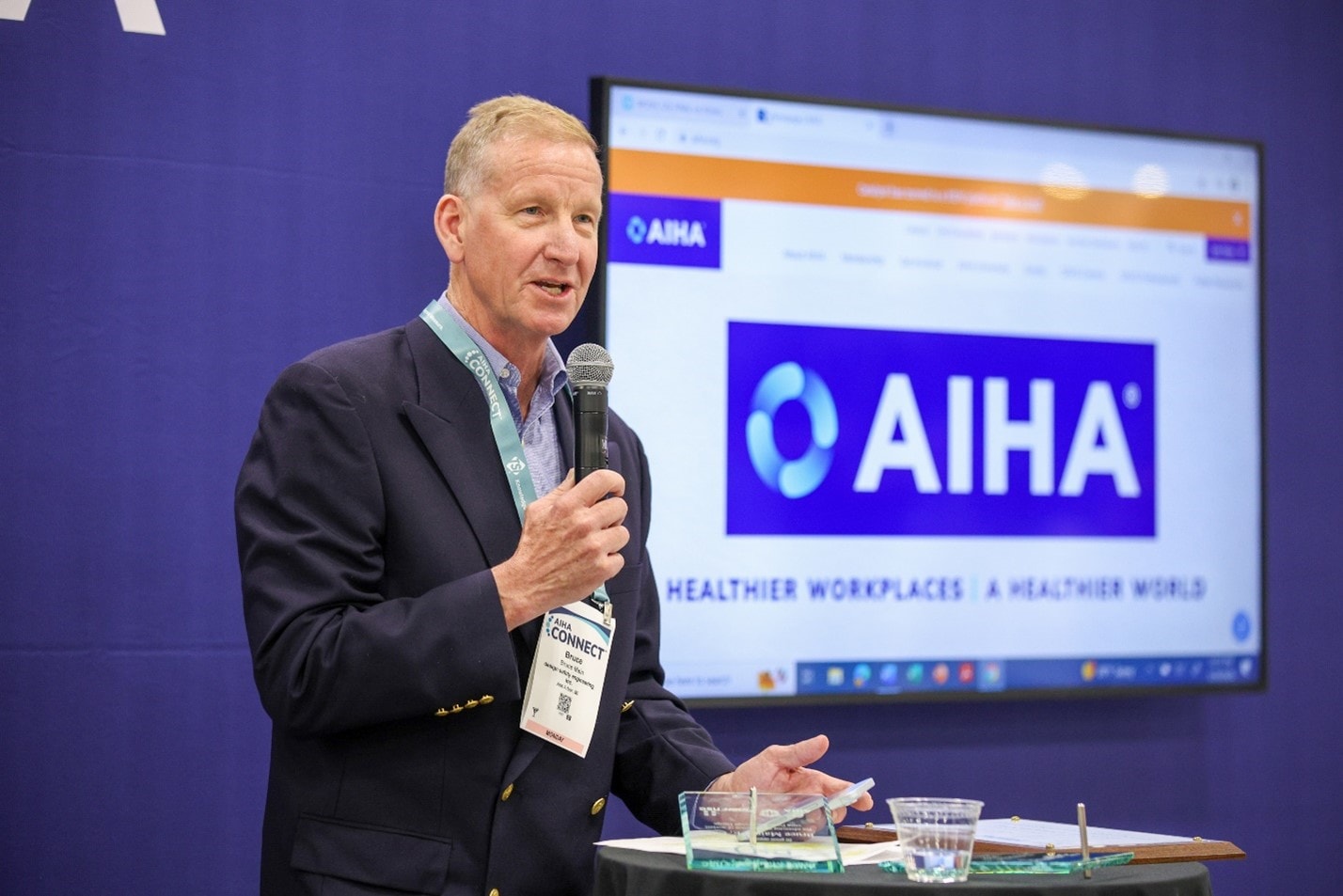
The individual awardee, Mr. Bruce Main, PE, CSP, (video1, video2, video3) was a founding member of the NSC Institute for Safety through Design, and co-author of the resulting Safety through Design textbook. He was vice-chair of the first ANSI/ASSP Z590.3 PtD standard committee and remains a member. Mr. Main chairs the ANSI B11 Safety of Machinery standards committee, and has led, or served on, over 10 ANSI and ISO standards committees. In 1995 he started and continues to lead Design Safety Engineering, Incorporated. This consulting firm also creates the DesignSafe risk-assessment mobile & PC software, now in version 9. Mr. Main holds two patents in safety systems, has authored or co-authored over 40 articles or manuscripts, and has trained over a thousand designers and other professionals in PtD and risk assessment. Mr. Main's long and continuing research, teaching, and engineering consulting continues to advance PtD for the protection of workers and the success of businesses.
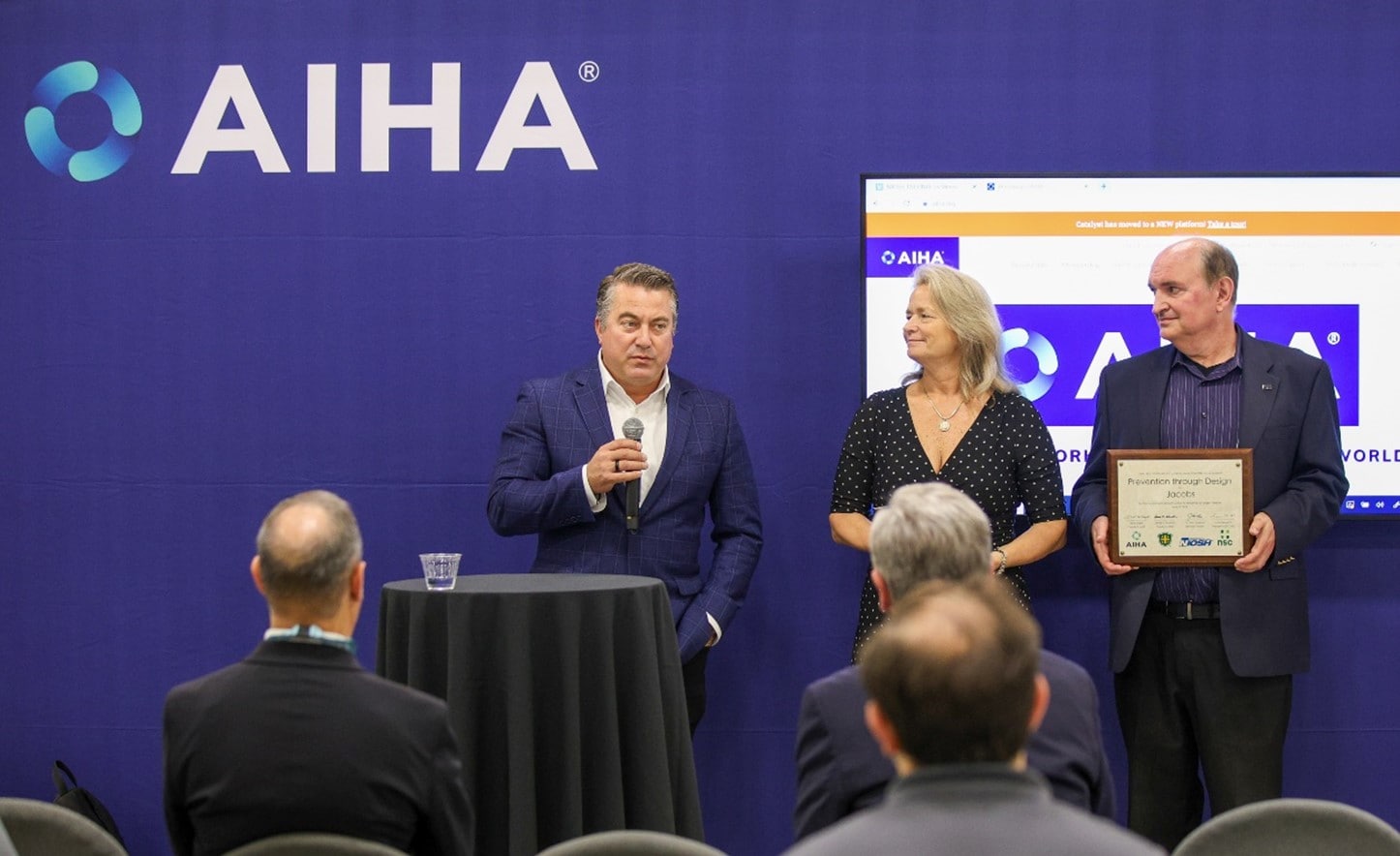
The organizational awardee, Jacobs Solutions, Inc. (video1, video2, video3) has carefully developed PtD processes over many years. Their de5ign "FIVE in design" process integrates global requirements to arrive at best practices, tools, and training for: Worker Protection; Designer and Manager Growth; and Project Success. As an example, in one project, they prevented over 1.7 million hours of high-risk work – eliminating 700,000 hours of work at heights while saving nine million dollars. Jacobs regularly shares their insights with others to advance the industry. Jacobs Solutions is implementing win-win PtD techniques to protect workers, deliver great projects, grow successful business, and provide industry leadership for others.
2024 Honorable Mention Nominations (alphabetical, individual first):
Mr. Ziad Bousaleh (video): In just two years Mr. Bousaleh has established a thorough PtD program for the Lawrence Berkeley National Lab (LBNL). He has worked with the team there to produce design guides, checklists, and design-review processes. Mr. Bousaleh is showing how to protect workers by implementing PtD in a National Lab.
Dr. Sang D. Choi (video): Dr. Choi's research, publications, field consultation, and teaching have provided ergonomic solutions in construction, and have advanced PtD understanding in industry and occupational safety and health. In addition, Dr. Choi's "Research to Practice to Research" model improves two-way collaboration between researchers and practitioners to better protect workers. Dr. Sang D. Choi's innovations contribute substantially to protecting workers by design.
Dr. John Gambatese(video): Dr. Gambatese was researching and teaching "Prevention through Design" before the phrase existed. As a PtD pioneer, Dr. Gambatese inspires, mentors, and trains many leaders in the practices of design, construction, and PtD. In fact, he was an advisor for the 2023 winner. His many publications include a practical guide to integrate PtD into design and construction projects – available FREE at DesignForConstructionSafety.org. Dr. Gambatese' encouragement, inspiration, and leadership have contributed to PtD awareness, practice, and success for decades.
Mr. Alexander Ruggiero (video): Mr. Ruggiero invented and prototyped a "Knee-Saver Electrical Box" and a "Time-Saver Electrical Switch." Both are designed to reduce installation time and ergonomic stress, and the modular switch eliminates exposed live wires. Innovative designs will always be an important example of PtD.
Amazon.com, Inc. (video): This nomination was for a product development process, and resulting equipment, used to avoid repetitive ergonomic stress. Placing product totes on pallets was a high ergonomic-stress task, so it was changed to be robotic, eliminating ergonomic stresses from over one billion product totes thus far. They strive for continuous safety improvement – the system is now in its SIXTH generation. Generation 4 also resulted in higher throughput. Amazon's product development team is showing how the reduction of ergonomic stress can benefit both the workers and the business.
New York City Department of Environmental Protection's Bureau of Engineering Design & Construction (video): As the largest municipal water and wastewater utility in the United States, they established a PtD program with training, design-guides, checklists, project design reviews, and more. Design-related incidents have decreased, and so have overall incident rates. Overtime and medical costs have gone down. And employees report fewer problem concerns. The Bureau of Engineering, Design & Construction is protecting workers and showing that a municipality can implement a robust PtD process.
2023 Award Winners
NSC hosted the first LIVE presentation of the PtD Award at the NSC Congress & Expo in New Orleans. The NSC has provided a video of the event here.

Awardee Port of Portland (video) won the PtD Award for their work at the PDX/Next airport. They worked on five facilities during a $325 million project. They used an integrated design-safety process and the Hierarchy of Controls, which is a system to address workplace hazards that prioritizes methods from most to least effective. This helped them make the construction, operation, and maintenance of these facilities safer.
The Port of Portland, along with JE Dunn and YGH, decided to use PtD because it worked well on smaller projects. They met at least once a month to talk about the project. Making PtD a part of the contract was important, and this included making sure it met standards for being eco-friendly, such as requiring the PtD credit for the U.S. Green Building Council's LEED certification.
They shared many examples of actions they took to improve safety, including designing roofs, planning construction work, and using safer engineering methods. They creatively avoided using ladders. They were concerned about how safety railings on roofs would appear, so they made a virtual video to show how it would look and ended up using permanent railings.
They also built components on the ground and then lifted them into place. This reduced the risk of falls, made the work less physically demanding, and prevented tools from falling. One method they used saved $20,000 in work hours and equipment costs.
The team found that using PtD either didn't cost much more or even saved money over older methods. They now share what they learned with others in the industry and at other airports.
The Port of Portland, JE Dunn, and YGH have successfully applied PtD methods on a large project and are showing others how to do the same.
2023 Honorable Mention Nominations (alphabetical, individuals first):
Jack Dolan-Brown's Work in Oil Fields (video) is also studying for a safety and health doctoral degree. He suggested a new standard way to make a job safety analysis:
- Identifying dangers by looking at different types of energy.
- Using the Hierarchy of Controls to prioritize methods.
- A scoring system to evaluate the job safety analysis.
Mr. Dolan-Brown's work has the potential to significantly improve safety for workers.
3M's Noise Reduction Project in Wisconsin (video): The 3M team in Menomenie, Wisconsin, worked together to reduce noise in a new production line. They faced a challenge from loud noise from air knife systems and exhausts, and they wanted a solution that did not require workers to take more steps to reduce noise. They tested different ideas and chose these:
- Seals on hinges and openings.
- Enclosures reaching the floor.
- Thicker walls in the enclosures.
- Foam that absorbs sound at a total cost of only $7,000.
This reduced noise by about 10 decibels, saving money that would have been needed for hearing protection programs. The enclosures also helped protect workers from machinery and materials and made the workplace a better environment for the workers.
Automotive Lift Institute's Training Improvements (video): The Automotive Lift Institute is a private, non-profit organization recognized by the American National Standards Institute (ANSI). The Automotive Lift Institute oversees three standards for lifts. Finding that mistakes by users were a major reason that cars fell from lifts, they improved their training to be more interactive and realistic, including:
- Real-life examples.
- 3D animations.
- Versions for mobile devices, in Spanish, and for schools.
San Francisco Public Utilities Commission's Safety Enhancements (video): The commission serves 2.7 million customers and had safety issues in older facilities, some dating back to the early 1900s.
Problems included unsafe access, confined spaces, valves and gauges at heights, and lack of methods to prevent falls. The Safety and Health Program worked closely with engineering and operations during extensive capital improvements. They relied on the ANSI/ASSP Z590.3 Prevention through Design standard to help address hazards as early as possible. They worked on major upgrades, focusing on safety from the start. The commission:
- Reviewed injury records.
- Held workshops with workers and designers.
- Encouraged workers to share photos of unsafe areas.
- Used guidelines based on the Hierarchy of Controls, including pictures and examples of good and poor practices.
- Improved stairs, lighting, and valve locations to reduce risks.
These guidelines have been so successful that they are now part of business requirements. Stairs, lighting, ventilation, and re-location of valves and gauges have eliminated some confined spaces. Railings, stairs, and integral fall-arrest systems have reduced fall hazards.
Their teamwork and guidelines are great examples of proactive safety design.
2022 Award Winners
Awardee: Dr. Georgi Popov, PhD, QEP, CSP, ARM, SMS CMC, FAIHA
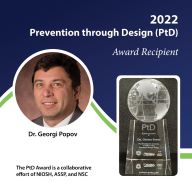
On October 11, 2022, longtime occupational safety and health expert, Dr. Georgi Popov received the Prevention through Design PtD Award for his research, teaching, writing, industry consulting and design, and the creation of a practical model to help make the Business Case for Prevention through Design interventions. Read the full NIOSH Update.
2022 Honorable Mention Nominations (alphabetical, individuals first):
Mr. Bruce Main (see the 2024 award winners above)
Jacobs Engineering (TX, United Kingdom (U.K.)) (see the 2024 award winners above)
The New York City Department of Environmental Protection Bureau of Engineering Design & Construction (NY) (see the 2024 award honorable mentions above)
Park Health & Safety Partnership LLP (U.K.) has incorporated PtD principles in an extensive series of best practice facility design templates for the design and construction industry. These are available to any firm wanting to begin or improve PtD design safety and health processes.
The Port of Portland (OR) (see the 2023 award winner above)
Tesla Inc. (TX) studied ergonomic hazards and collaborated with workers to design a passenger car with an innovative "Supertub" modular underbody that allows their production associates to stand erect while constructing much of the vehicle interior. The design resulted in a 95% reduction in recordable and first aid cases, and contributed to reduced equipment costs, improved quality, and improved morale.
UrbanE Recycling, Inc. (FL) used the PtD methods of risk assessment and alternatives assessment to improve vehicle driver safety. Collaborating with employees, they designed an individual training and performance award system using data-driven scoring from GPS and camera data. UrbanE Recycling was careful to avoid negative peer-pressure that can result from subjective, team-based incentive programs. More than a year of data shows a four-fold reduction in distracted driving and excessive speed.
2021 Award Winners
2021 Awardee: Fred Manuele, PE, CSP
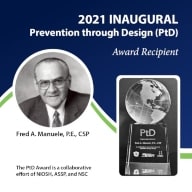
On July 14, 2021, longtime occupational safety and health expert, Fred A. Manuele, PE, CSP, received the inaugural PtD Award for his outstanding foresight, wisdom, tireless effort, and major accomplishments in preventing harm to workers by helping organizations avoid and prevent hazards. Read the full NIOSH Update.
